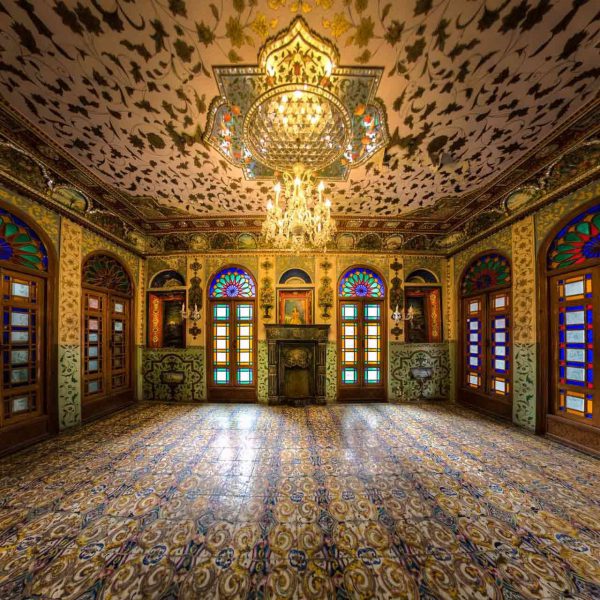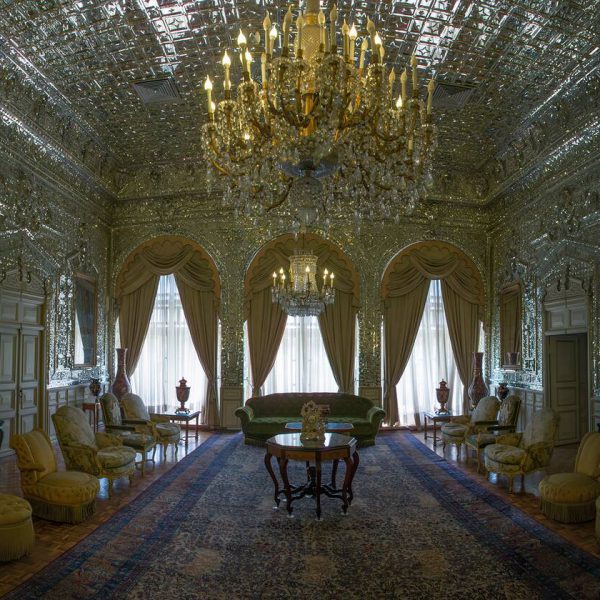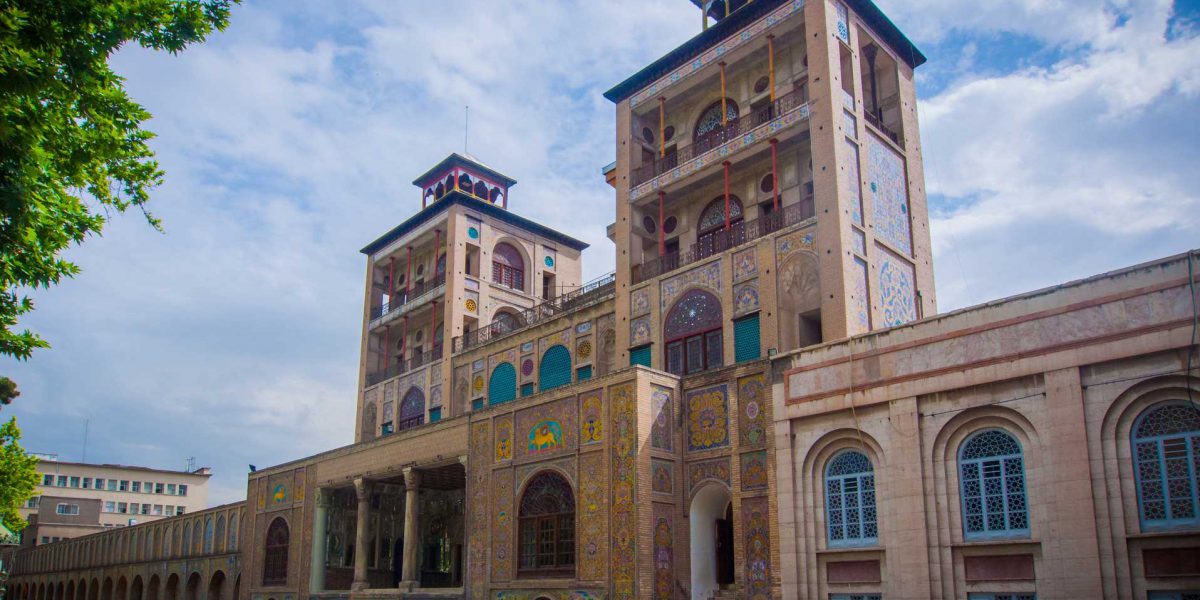Golestan Palace is one of the magnificent palace complexes in Iran. Currently, this 18th-century masterpiece is the only UNESCO recognized heritage in Tehran, the capital of Iran. Mainly, this palace belongs to the 18th and 19th centuries. However, it holds a collection of art and stories about years before and after it. It is a rich example of Persian Art from its exterior design with unique tilework to Mirror and Diamond Halls. Notably, this complex has about 17 buildings, including pavilions, museums, and halls. In this post, we will be talking about different points of interest of the complex. Also, we will get into the significance, facts, and history, and the best time to visit Golestan Palace.
The Significance of Golestan Palace
The basis of the architecture of the Golestan Palace represents a blend of Persian and European methods. That said, as a whole, it is a collection of authentic Persian tilework, mirror work, stucco, lattice windows, and more. However, the technology of the building implies an influence of European technology. Interestingly, there are examples of both European and Iranian paintings in different parts of the complex. The palace was first a citadel and gateway to the city of Tehran. However, it eventually became the official residency of Qajar kings with further adjustments in the Zand era. During the Pahlavi era, they held royal coronations and ceremonies in the palace. All said, let us now get into the history of how this palace became a masterpiece over 400 years.
Golestan Palace’s Facts & History
The history of Golestan Palace dates back to the Safavid era ( about 400 years ago). Accordingly, this fact originates from the travelogues of Pietro Della Valle. At the time, this palace complex was in a region called Tehran Arg(Citadel). However, it was during the reign of Karim Khan that the palace started to gain importance. Notably, Karim Khan was the founder of the Zand dynasty. After his death, Agha Mohammad Khan of the Qajar dynasty seized power. By overpowering Lotf Ali Khan, the last king of the Zand Dynasty, he became the king of Iran. Interestingly, Agha Mohammad ordered to exhume Karim Khan’s bones and place them under one of the entrances. Therefore, as a symbol of disrespect, everyone would have had to step on his grave before entering the palace.
The beginning of the glory of Golestan Palace
Notably, during the reign of Naser al-Din Shah of Qajar, this palace became more glorious. Also, his coronation took place in Golestan Palace. The influence of European art on this palace was due to his several trips to Europe. Until the end of the Qajar dynasty, this palace was a witness to many important historical events. Persian Constitutional Revolution was one of these events. After the fall of the Qajar Dynasty, this palace kept its glory during the Pahlavi Era. Accordingly, the coronation of the first and second Pahlavi Shahs took place in Golestan Palace.

Points & Architectural highlights of Golestan Palace
As we mentioned before, while visiting Golestan Palace you can see the blend of Persian and European Art. This blend of art firstly shows itself in the unique tile work in different parts of the palace. Aside from this, the halls covered with mirrors and goldwork adds to the magnificence of the complex. Keep in mind that for visiting different halls and museums, you need to purchase additional tickets at the gate. Here, we will be listing the several halls and museums of the palace complex that you can visit. All the same, you may visit them in any order.
The edifice of the Sun (Shams-ol Emareh)
Shams-ol Emareh is the symbol of the old Tehran. This tall building is on the eastern side of the complex. Naser al-Din Shah, influenced by the tall European buildings, ordered the construction of this edifice. Back then, from this building, one could have a panoramic view of the city.
Marble Throne (Takht-e Marmar)
The Marble Throne is one of the oldest parts of the complex. This terrace showcases adornments including marble and woodcarvings, tile work, stucco, mirrors, and lattice windows. The Marble Throne at its entrance with sixty-five pieces of marble is one of the eye-catching parts of the complex. Demon, angel ( or human) statues carry this throne on their shoulders.
Karim Khani Nook (Khalvat-e Karim Khani)
This terrace is on the northwestern part of the complex. Under the staircase leading to this terrace is where Agha Mohammad ordered the bones of Karim Khan to be buried. However, the bones were removed during the Pahlavi era. Eye-catching tile works, a pond, gravestone of Naser al-Din Shah, the marble throne of Fath-Ali Shah are the most notable attractions of this part.
The building of Windcatchers (Emarat-e Badgir)
The building is on the southern part of the complex. This part holds a collection of decorative Persian designs. Some of these arts include Painting, gold, mirror work, and marble works, and woodcarvings. Another section of this building is:
- The Photographic archive in the Pond House (Howz Khaneh) that is under the Building of Windcatchers. In this part, there is a gallery of some of the photographs taken by Naser al-Din Shah. Interestingly, he was the first person to introduce the art of photography to Iranians.
The Hall of Chinawares (Talar-e Zoruf)
This hall is on the northern side of Ivory Hall that we will be talking about further on. There is a showcase of Chinawares dedicated by the European kings and queens to Qajar kings in this part. These Chinawares were dedicated by:
- Napoleon Bonaparte that shows the Napoleonic Wars.
- Nicholas I of Russia.
- Queen Victoria with some gems and jewels.
- Wilhelm II.
- Alexander III of Russia, made of malachite stone.
The Main Halls of the Complex
- Salam Hall (Talar-e Salam) was once a museum for exhibiting Iranian and European paintings and Royal jewels. This Hall is famous for mirror works and plaster molding on the walls and ceilings. The hall is close to Karim Khani Nook. Under this hall, there is a Pond House (Howz Khaneh). You can find a gallery and museum of gifts dedicated to Qajar kings in the Salam Hall’s Pond House.
- Mirror Hall (Talar-e Aineh) is on the western side of Salam Hall. The exquisite mirror works in this part catches the eye. You can find the oil painting of the famous Iranian painter Kamal-ol-Molk of Mirror Hall on the wall.
- Ivory Hall (Talar-e Adj) is next to the Mirror Hall. There is a painting by Malek o-Shoara that shows the exterior view of this hall.
Other Parts, Halls and Museums
- Brilliant Hall (Talar-e Brelian) is on the eastern side of Ivory Hall. This hall is famous for its excellent mirror work and chandeliers.
- Diamond Hall (Talar-e Almas) is on the southern side of the complex. Its many mirror works are the reason behind its name.
- Abyaz Palace was a palace built for exhibiting the gifts of Ottoman Sultan Abdul Hamid. Today, this palace is an Anthropology Museum.
Other parts of the complex include the Documentation Centers, libraries, and offices. You can also enjoy some time drinking tea in the small tea house in the complex. It is worth mentioning that there are some photography limits while visiting this complex. However, you are allowed to take photographs without using flashes and tripods in some parts.

When and where can I visit Golestan Palace?
Golestan Palace is open every day except for Islamic Holidays. The opening hours of this Palace are:
- From 9 AM to 6:30 PM.
As for the location of Golestan Palace, it is on Panzdah-e Khordad street. You can reach this street by getting on the subway. Keep in mind that Golestan palace is in the traffic zone. Accordingly, If you are taking a taxi to the palace, you should get off at a nearby alley. Then, after a short walk, you can reach this palace complex.
Attractions near Golestan Palace
Golestan Palace is one of the attractions in old downtown Tehran. That said, you can visit many historic attractions near this palace. Accordingly, just near the palace, moving to the south is the old bazaar of Tehran. On top of this, some of the most elaborate museums in the city are nearby.
Other Famous Attractions near Golestan Palace are:
- The National Museum of Iran
- Treasury of National Jewelry Museum
- Negartestan Garden
Golestan Palace is only one of the masterpieces in the capital of Iran. There are many more historic and notable attractions around the city. Aside from these attractions, you can get more out of your trip to the lively city of Tehran. For more information, you can check out our blog post about Tehran, its points of interest & things to do.


Comment (0)